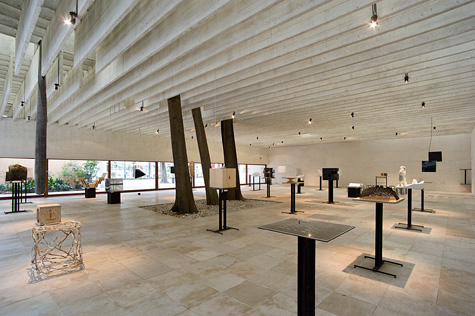
Asphalt is at once omnipresent and overlooked. It shapes our cities and enables our highways, yet remains largely in the background of our environmental perceptions.
Last fall, students from the Sam Fox School of Design & Visual Arts’ newly created Master of Landscape Architecture (MLA) program sought to examine this most mundane of materials through the lens of surface parking.
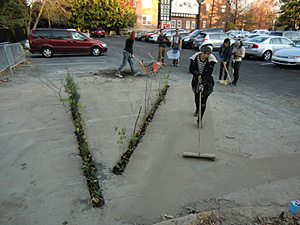
Working under the direction of Dorothée Imbert, program chair; Natalie Yates, assistant professor; and visiting critic Paula Meijerink, students designed and installed Parking Plot, a cleverly subversive experiment that aims to reinterpret asphalt and broader notions of just what constitutes “urban nature.”Now, Parking Plot is one of two projects with ties to the Sam Fox School included in the U.S. Pavilion of the 2012 Venice Architecture Biennale — arguably the profession’s leading international showcase.
Also included is 1415, a St. Louis redevelopment project led by former visiting artist Theaster Gates Jr.
In addition, Peter MacKeith, associate dean of the Sam Fox School and associate professor of architecture, curated the Nordic Pavilion in its entirety.
An authority on Nordic architectural culture — and an honorary consul to Finland — MacKeith spent much of the last two years organizing Light Houses: On the Nordic Common Ground. The exhibition showcases conceptual models demonstrating Nordic ideals of “light-ness” and “house-ness,” as interpreted by 32 leading architects from Finland, Norway and Sweden.
“It is a significant honor to have a project in the Venice Biennale,” says Carmon Colangelo, dean of the Sam Fox School and E. Desmond Lee Professor for Collaboration in the Arts. “To have three is an impressive achievement and speaks to the vision and talent of our students and faculty.
“These projects represent the work of a number of our students, faculty, staff, alumni, and visiting artists and architects,” Colangelo says. “We are incredibly proud of them all.”
Common Ground
This year’s Biennale was organized by Sir David Chipperfield, the celebrated British architect who recently designed a major expansion of the Saint Louis Art Museum. Titled Common Ground, the exhibition aims to highlight the collaborative nature — and social thrust — of contemporary architecture.
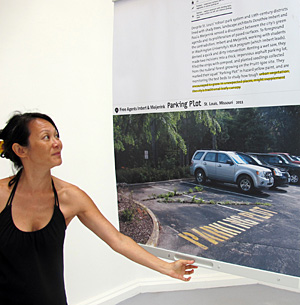
In that spirit, the U.S. Pavilion presented Spontaneous Interventions: Design Actions for the Common Good. Curated by Cathy Lang Ho with the New York Institute for Urban Design, the exhibition collects 124 projects that expand the functionality, sustainability and livability of cities. It earned one of four Special Mentions from the Biennale International Jury, which praised its “celebration of the power of individuals to change society.”
“Parking Plot, project 81 in Spontaneous Interventions, could be described as a landscape performance,” Imbert says. “It demonstrates how our asphalt landscape can be altered with minimal means and how significant urban vegetation is.”
To begin, Imbert, Yates and Meijerink secured the loan of two WUSTL parking spaces, just off Wydown Boulevard, and then conducted a workshop with the MLA class.
After agreeing to a strategy, students identified drainage patterns and sites at which to locate future plantings. Next, they rented a concrete wet saw; cut (at great physical expense) two strips across the parking spots; and planted sumac, juniper, honeysuckle and other “volunteers” collected from the urban forest growing on the former Pruitt-Igoe housing site downtown.
“Parking Plot is a bit of agitprop,” Imbert says. “It is a plot on parking and the impervious, hot asphalt of contemporary cities.” And, since students continue to monitor the plants, “it is also a test plot for urban vegetation, and a suggestion that tough is beautiful.”
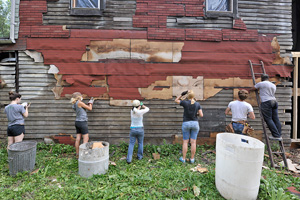
Gates, meanwhile, led a small army of volunteers to transform a dilapidated mixed-use building — located at 1415 Mallinckrodt, in the Hyde Park neighborhood — into an arts center for students at nearby Most Holy Trinity Catholic Church and School.
That workforce included students who participated in Somethingness: Ways of Seeing and Building. The summer 2011 design-build course was a project of CityStudioSTL, which works with local groups to conceive, design and ultimately construct publicly minded projects. Students spent several weeks shoring up the structure and building a small amphitheater in the rear of the property.
“The 1415 project represents architecture as a form of civic and social engagement,” says Bruce Lindsey, dean of architecture and the E. Desmond Lee Professor for Community Collaboration.
“Questions of design and construction become a way to explore the nexus of race, history and community,” Lindsey says. “It is architecture as cultural research.”
http://www.youtube.com/watch?v=APlBR3HaEtY
Nordic Light House
Social and environmental themes also underscore MacKeith’s exhibition for the Nordic Pavilion.
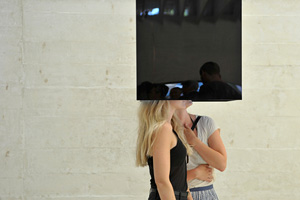
Designed by Pritzker Prize-winning architect Sverre Fehn, the Pavilion has long served as both physical and metaphorical “common ground” for Finland, Sweden and Norway. For Light Houses, MacKeith elected to celebrate the structure’s 50th anniversary by selecting 32 architects born after 1962 — 10 from Norway and 11 each from Finland and Sweden — and inviting them to create model conceptual homes reflecting their personal philosophies of architecture.
“Contemporary Nordic architectural culture offers both exemplary approaches and significant constructed works addressing the most challenging circumstances of our time,” MacKeith says. “The classic hallmarks of Nordic architecture – simplified form, frugal use of materials and sensitive treatment of daylight and the natural setting – embody the basic principles of responsible, sustainable architecture.”
MacKeith adds that the Pavilion owes much in its design to the Sam Fox School’s architecture program. In addition to MacKeith’s curatorial work and exhibition design, 2004 alumnus Philip Tidwell served as assistant curator and designer; and Juhani Pallasmaa, a former Raymond E. Maritz Visiting Professor of Architecture and recipient of the school’s 2012 Dean’s Medal, designed the exhibition pedestals.
“This is what MacKeith is inviting you to do,” architecture critic Cate St. Hill writes for Building Design UK. “Come into this open house, walk among the (‘Light Houses’), contemplate the designs, even touch a few if you would like, all a welcoming change from being brainwashed with endless information as with some of the other pavilions.
“The result is simple, highly tactile and very Scandinavian.”
The 13th International Venice Architecture Biennale remains on view through Nov. 25 in Venice, Italy.